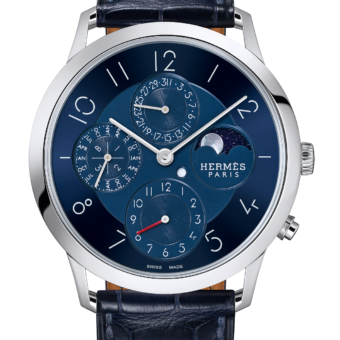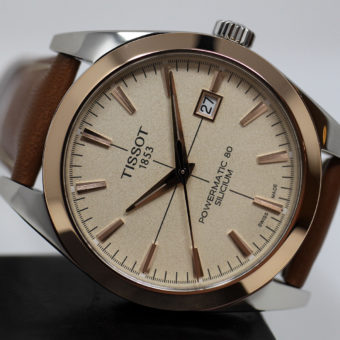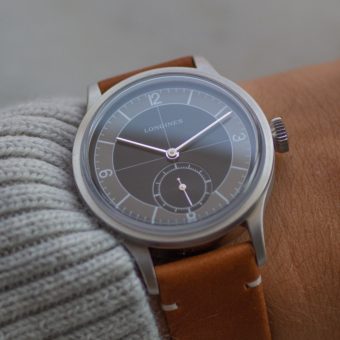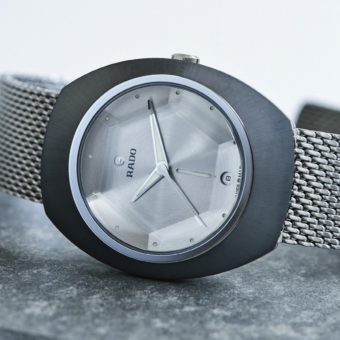As we approach the end of 2017 and prepare for a new year of watch releases in 2018, we wanted to take a look back at some of the most noteworthy timepieces that came out this year. Check back each day this week for a new list focused on everything that 2017 had to offer. — The WatchTime editors
Learning about the history of watchmaking offers a romantic look into the era when horological rock stars were constantly innovating and building up some of the legendary brands that we know and love today. That’s one of the reasons why it seemed like this year — more so than any other recent year — watch brands everywhere pushed a vintage-inspired model or two into the top of their lineup. After all, what better way to embrace history than on your wrist?
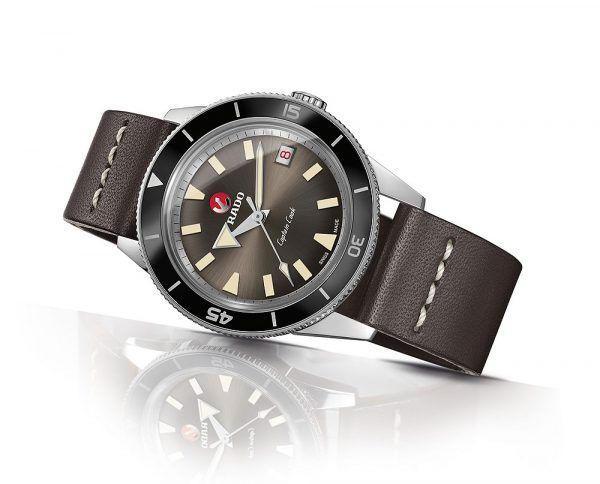
Let’s start with the Rado HyperChrome Captain Cook, a watch that a member of our staff liked so much he ended up purchasing one for himself. This timepiece is so out-of-the-box for Rado that it captivated many people in the watch industry. Combine that with the excellent size at 37 mm and how faithful it is to the 1962 original, and it was a winner for a whole lot of folks. The size has been upped slightly from 35.5 mm to 37, but the crown, the date window placement and style, the inward-sloping bezel, and the caseback are all identical. It embraces its vintage background in the absolute best way. The 37 mm Rado HyperChrome Captain Cook is priced at $1,900 and it also comes in multiple 45 mm versions. Learn more here.
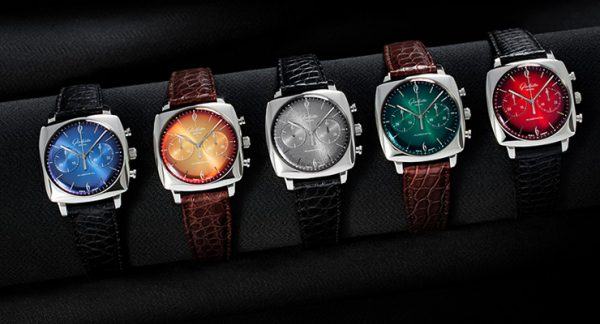
With the release of the circular Sixties Iconic this year, Glashütte Original set out to produce a fascinating homage piece to the classic square Spezimatic watches produced by the brand’s state-owned forbear, Glashütter Uhrenbetriebe (GUB). These vintage Spezimatics were incredibly interesting watches, often embodying what was thought of as funky western ‘60s and ‘70s styles and colors, but produced and worn in Soviet-occupied East Germany. They came in all sorts of color schemes, materials, complications, shapes, and sizes, and you might remember when the brand released its first tribute piece to these watches, the Sixties Iconic, in 2015. This year, Glashütte Original has once again returned to this collection, with a limited edition of 25 pieces in five dial colors (125 total watches), but this time making them with period-appropriate Spezimatic-square cases and also adding a modern chronograph function. Available in five different dial-color options, each Sixties Iconic Square comes in at 41.35 mm by 41.35 mm in a cushion-shaped steel case. You can read more here.
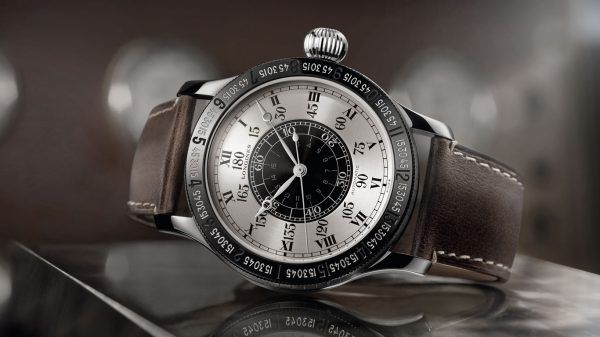
Among the many watch-world milestones commemorated at Baselworld this year was the 90th anniversary of Charles Lindbergh’s historic non-stop transatlantic flight in the “Spirit of St. Louis” — a historical event timed by Longines. In celebration, the Swiss brand offered up a new version of its Lindbergh Hour Angle watch — a watch designed for Longines by Lindbergh himself — in a 90-piece limited edition. Lindbergh’s 1927 flight from Roosevelt Airport in New York to Le Bourget airport near Paris was the first-ever non-stop transatlantic flight by a solo pilot; it was also a milestone for Longines, which timed the flight as official timekeeper for the World Air Sports Federation and added it to the list of aviation records. Shortly thereafter, Lindbergh worked with Longines to produce one of the brand’s most historically significant timepieces, the first so-called Hour Angle watch in 1931; its groundbreaking, rotating-bezel design allowed pilots and navigators to calculate their longitude during long-distance flights, thus allowing them to home in on their geographic location quickly, efficiently, and accurately. Longines re-introduced the Lindbergh Hour Angle to its Heritage collection several years ago and this year it added the Lindbergh Hour Angle Watch 90th Anniversary, the first Hour Angle watch with a titanium case, to its catalog. All the details here.
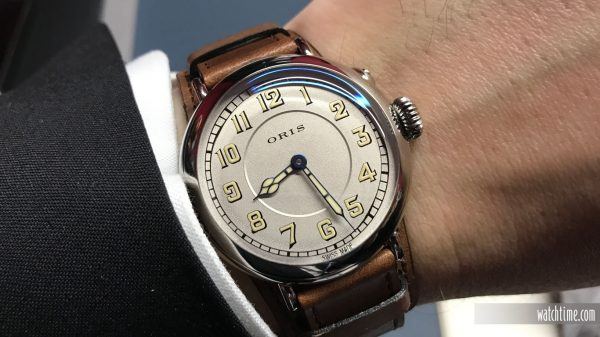
A few years back, Oris researchers, while digging through the brand’s archives, discovered 1917 pilots’ wristwatch that was converted from a pocket watch. Surprisingly, Oris produced this piece more than twenty years prior to what company records had previously indicated. Luckily for us, we live in an age in which someone at Oris saw this 100-year-old piece and thought, “Let’s make this watch again,” and thus, in 2017, we now have the Oris Big Crown 1917. This modern homage, like many pieces that draw their inspiration from the early 20th century, takes many of the aesthetic elements of a pocketwatch-converted piece and transforms them through modern manufacturing into something current that still honors its past. With its steel 40 mm diameter; thin, wire-inspired lugs; and large onion crown that gives it its “Big Crown” moniker, the watch clearly set out to channel the round, curved complexion from the early history of wristwatches. On its dial, you’ll find both intricacy and simplicity. At first glance, the well-balanced elements of its railroad track outer minute ring, vintage-inspired “Old Radium” filled Arabic numerals and cathedral hands and stepped silver case appear rather modest. But on further inspection, you’ll remember the rarity of these elements being in combination with one another, and you’ll notice the slightly blued steel of the hands and the uncommon grainy texture of the dial. Everything else you might need to know can be found here.
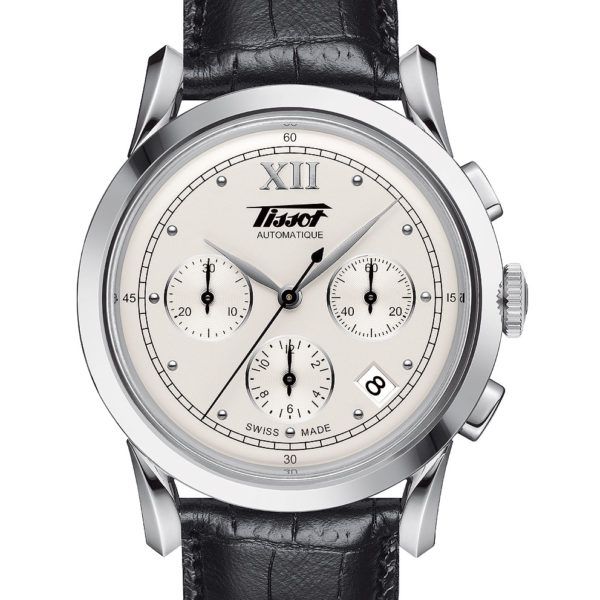
Tissot has been a relatively minor player in the growing market of vintage-inspired watches. With only a few recent releases — such as the Tissot Heritage 1936 Mechanical and the Tissot Heritage Navigator — the brand is slowly getting more involved in the category, yet remains overshadowed by other Swatch Group brands’ vintage-inspired re-issues (like the aforementioned Captain Cook). This year, Tissot worked to change that with the release of the Heritage 1948 Chronograph, an automatic watch inspired by models produced in and around that namesake year. This new watch draws many of its design elements from vintage pieces in Tissot’s collections — especially those of the 1940s — many aspects of which remained in the brand’s collections up until the mid-1960s. However, in many other areas, the watch adds a new modernity that differentiates it from a full re-issue of any specific vintage piece. You can find out more here.
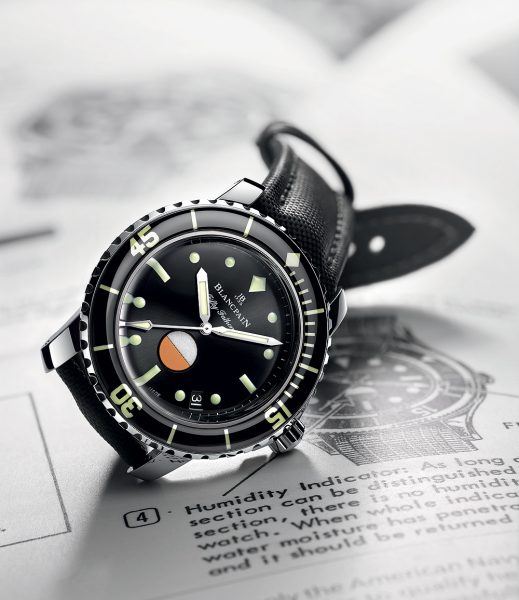
In the late 1950s, Jean-Jacques Fiechter, longtime Blancpain CEO and originator of the brand’s now-iconic Fifty Fathoms divers’ watch, introduced a new innovation that enabled that timepiece to meet the strict standards for U.S. military use. That feature — a circular water-tightness indicator on the dial — has been resurrected in the new Tribute to Fifty Fathoms MIL-SPEC, the latest vintage-inspired take on the Fifty Fathoms. This watch’s historical predecessor made its debut in 1957-58 and was designed specifically to pass a battery of tests conducted on a variety of watches by the United States Navy, which was seeking a timepiece for use on underwater missions. The original Fifty Fathoms MIL-SPEC-1 shortly thereafter became standard issue equipment for American combat swimmers, including, eventually, the U.S. Navy SEALs’ elite Underwater Demolition Team (UDT). Future versions of the watch produced in the early 1960s called the MIL-SPEC-2 and the Tornek-Rayville TR-900 were also used by the U.S. Navy, which by then had declared the water-tightness indicator as a requirement. The indicator, on a large disk at 6 o’clock that changed its color from white to red if liquid leaked into the case, was a follow-up invention to several others Fiechter and Blancpain had introduced in the Fifty Fathoms models — among them the first interior O-ring sealing system for casebacks, the first blocking mechanism for a rotating dive-scale bezel, and the now-ubiquitous unidirectional diving bezel. Everything else you need to know can be found here.

